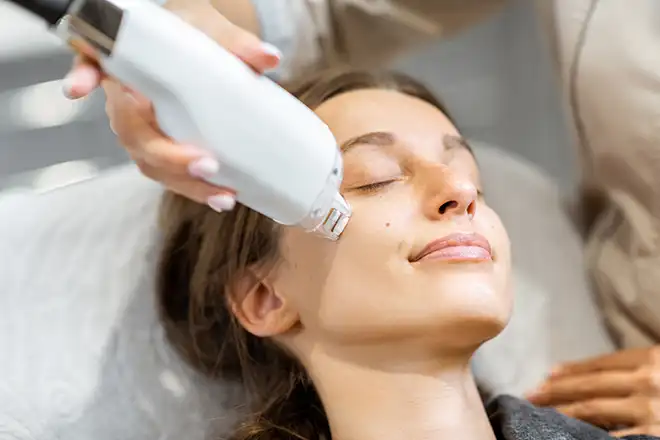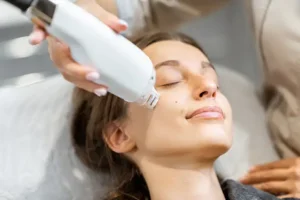A New Era for Acne Scar Treatment
Acne scars can be one of the most frustrating skin concerns to treat. While lasers, microneedling, and chemical peels can improve texture, none can fully restore smooth skin — and many come with downtime or side effects.
But new research is shining light on an innovative approach: high-intensity, high-frequency parallel ultrasound beams.
According to recent studies published in Dermatologic Surgery (August 2025) and ResearchGate (2024–2025), this cutting-edge technology is showing impressive results in safely improving acne scars, even in darker skin tones.
What Is Parallel Ultrasound Beam Technology?
This new technology uses multiple parallel ultrasound beams that deliver controlled energy into the mid-dermis, the layer where acne scars form.
Here’s what makes it unique:
-
The energy is non-focused, so it doesn’t damage the surface of the skin.
-
It creates tiny, controlled thermal injuries deep in the dermis.
-
These microthermal zones trigger the skin’s natural healing process, boosting collagen and elastin production (known as neocollagenesis and neoelastinogenesis).
As a result, the skin becomes smoother, firmer, and more even over time — all without needles, lasers, or downtime.
What the Studies Show
Two major studies have put this technology to the test, and both delivered impressive outcomes.
📘 Study 1 – Dermatologic Surgery (Wang et al., 2025)
-
63 participants, ages 20–50, across all Fitzpatrick skin types (I–VI).
-
Each received up to 3 treatments.
-
Acne scar severity scores dropped by 45.5% — from 2.31 to 1.26 (p < .001).
-
96.8% of subjects were rated as “responders,” showing visible improvement.
-
No device-related side effects were reported.
📗 Study 2 – ResearchGate (Thailand, 2024)
-
14 Asian patients, ages 24–55, received a single ultrasound treatment.
-
All showed visible improvement in scar depth and texture using 3D imaging software.
-
Pain level averaged 3.9/10, with no pigmentation issues or complications.
-
Improvements continued for up to 8 months post-treatment.
Together, these studies show that high-frequency ultrasound can significantly smooth acne scars safely, effectively, and across all skin tones.
How It Compares to Other Treatments
| Treatment | How It Works | Downtime | Risk | Skin Type Suitability |
|---|---|---|---|---|
| Laser Resurfacing | Removes damaged skin layers | 1–2 weeks | Burns, hyperpigmentation | Best for light skin |
| Microneedling RF | Creates heat in deep skin layers | 3–5 days | Mild redness, swelling | All skin types |
| Chemical Peels | Exfoliates surface layers | 1–3 days | Irritation, dryness | Mild scars |
| High-Frequency Ultrasound | Stimulates collagen in mid-dermis | None | Minimal | All skin tones |
The biggest difference is that ultrasound is noninvasive — it heats deep layers without breaking the skin’s surface. That means no peeling, no bleeding, and virtually no downtime.
Who Benefits the Most
High-frequency ultrasound is ideal for people who:
-
Have textured or depressed acne scars (also called atrophic scars).
-
Want results similar to lasers but with no downtime.
-
Have darker or sensitive skin that can’t tolerate aggressive resurfacing.
-
Prefer a noninvasive treatment with minimal risk.
It’s also suitable for men and women of all ages who want overall skin tightening and smoother texture, not just scar improvement.
Who Should Avoid It
While generally very safe, this treatment may not be suitable for everyone. Avoid or postpone treatment if you:
-
Have active acne or skin infections in the treatment area.
-
Are pregnant or breastfeeding (not yet studied in these groups).
-
Have metal implants, pacemakers, or severe skin conditions.
-
Are looking to treat raised (hypertrophic) scars, which respond better to different methods.
What to Expect During Treatment
-
Each session lasts about 30–60 minutes.
-
The treatment feels like warm pulses or tingling on the skin.
-
Mild redness or tenderness may occur for a few hours afterward.
-
Results appear gradually over several weeks as collagen builds — with full improvement in about 3 months.
FAQs About Ultrasound Acne Scar Treatment
What is high-frequency ultrasound treatment for acne scars?
It’s a noninvasive procedure that uses parallel ultrasound beams to heat the mid-dermis, stimulating new collagen and elastin to smooth scarred skin.
How many treatments are needed?
Most studies used 1 to 3 treatments spaced a few weeks apart, with visible results after 2 to 3 months.
Is ultrasound safe for darker skin tones?
Yes. Unlike lasers, ultrasound doesn’t damage the surface of the skin, so it’s safe for all Fitzpatrick skin types, including darker complexions.
Does it hurt?
Most patients describe a warm or tingling sensation during treatment. Average pain scores in studies were around 3 to 4 out of 10.
Are results permanent?
Results can last over a year as collagen builds and stabilizes, but maintenance treatments may help prolong the effects.
High-intensity, high-frequency ultrasound represents one of the most promising new advances in acne scar treatment. It delivers measurable results in texture, depth, and overall skin quality without the risks of lasers or downtime.
Early research shows consistent improvements across all skin tones and scar types — making it a potential game-changer in noninvasive dermatology.
If confirmed in larger studies, ultrasound could become the next gold standard for treating acne scars safely and effectively.





